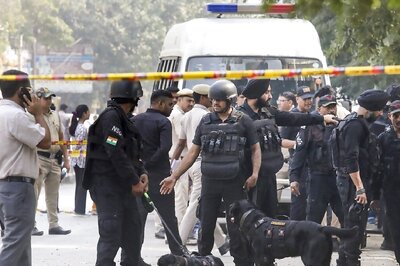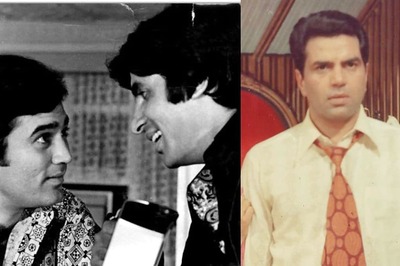
views
Bangalore: Bangalore traffic gives software engineer Murali a headache every morning. As he reads the newspaper, Murali tries to figure out the shortest possible way to his office.
Traffic crawls in Bangalore, and the city is battling rising pollution, encroachments and congested roads.
Bangalore's Master Plan is supposed to change the city for the better in 10 years. Managing that is going to be a tough task. Take Murali's daily commute for example.
He and hundreds of residents of KR Puram reach Whitefield and ITPL using an old bridge which hasn’t been improved in years.
Today, most people living in this area are forced to pass an old drain to access the Ring Road. This is because the state government has decided to build a cable bridge.
"Earlier I used to reach my office well within 15-20 minutes. Now it takes me more than 40 minutes just to cover six-seven kilometers. As a citizen, I strongly feel that Bangalore is not a planned city. Nobody expected so many people and so many vehicles," Murali said.
The KR Puram Bridge is not an isolated case. Bangalore today is a glaring example of a complete failure in city planning.
"There is tremendous urban sprawl in Bangalore; something I haven't seen in any other city. This has happened due to the planning decisions taken for the Comprehensive Development Plan (CDP) 1985-1995 (a document on city planning). The document allowed a bigger Floor Area Ratio (FAR) outside the city and smaller FAR in the heart of the city," says urban planner George Kuruvilla.
Another example of Bangalore’s mismanaged planning is the Puttenahalli Lake which is choking to death because of encroachments and garbage.
As many as 68 per cent of the 262 water tanks in Bangalore have disappeared; drains are choked with garbage and 900 vehicles are added to the congested roads every day and there are more than 800 slums.
The Bangalore Development Authority produces a Comprehensive Development Plan (CDP) every 10 years. It is the key document for a city planning.
PAGE_BREAK
"By 2015 Bangalore will be one of the key cities in the world and to be a key city you got to develop a certain set of activities and economy. This will be the challenge," says Urban planner Gopiprasad.
Several citizens and urban planners, however, are sceptical whether the challenge can be met, as a group of French urban planners have drafted the Master Plan.
"We have a lot to learn from foreign cities. There's no doubt about that. The issue is whether they should have been consultants to the Bangalore Development Authority or should they have actually made the plan as they have done at the cost of Rs 8 crore," Kuruvilla says.
"It could have been done with Indian planners with them as consultants at a fraction of the cost with much better results," Kuruvilla added.
But despite that, CDP 2015 is an extremely important document. For the first time the citizens of the city were asked to look at the Master Plan and give their feedback.
So what is the solution to the urban sprawl and will this Master Plan change anything?
"The solution to urban sprawls is that we need to reverse what has been done. Have a very identifiable core CBD within the town with high rises, high density areas like Indiranagar and Koramangala should have mixed use, so that people can walk to work. Our whole concept should be to improve the quality of life," Kuruvilla says.
The draft Master Plan for Bangalore is ready, the citizens have given their feedback and now it's just a matter of time before the plan is passed.
But, the real worry for urban planners is the gap between the plans and the reality. Unless CDP 2015 is implemented well, it will remain, like its predecessors - an expensive government exercise.



















Comments
0 comment